27 F. high temperature in the Twin Cities Monday.
34 F. average high on March 1.
28 F. high on March 1, 2015.
March 2, 1913: A record low of 24 degrees below zero is set at the St. Cloud Regional Airport.
 My Fading Film Career - April Returns Next Week
My Fading Film Career - April Returns Next WeekLife
is absurd. Martha Stewart owes me a dollar (for a can of pop). Phil
Mickelson broke our toilet. Steven Spielberg told me how he nearly
drowned in Kauai during the filming of "Jurassic Park".
This year
marks the 20th anniversary of the release of "Twister", the movie. A
previous company provided special effects for the film. I drove to Iowa
to help out, only to be offered a line in the flick. "Hey Bryce, you
better come here and take a look at this!" I nailed it - after only 8
takes. My last residual check from Warner Brothers? One cent. God has a
way of keeping us humble, right?
No twisters in the 7-Day, but a rumble of thunder is possible by
Tuesday as another spurt of April-like air arrives. Expect 50s by
Sunday, an outside shot of 60F
Tuesday.
Tournament
puddles this year, with temperatures 15-20F warmer than average into
mid-March. A few more slush-events are possible into April, but NOAA
CPC's new 3-month outlook calls for a warmer, drier bias into May.
Do you have a NOAA weather radio and a few warning apps on your phone? I expect a busy severe storm season.
Snow Drought Continues.
Models bring a little snow across Minnesota tonight and early
Thursday, but the MSP metro will see little or no accumulation. By the
time we do see precipitation (Friday PM hours) it may be warm enough
aloft for a light rain-snow mix. 84 hour NAM accumulated snow: NOAA and
AerisWeather.
February Was Earth's Warmest Month in the Satellite Record. It didn't just break the record - it blew it away. Meteorologist Jason Samenow reports at
The Capital Weather Gang; here's the intro: "
The
temperature of the lowest section of the atmosphere hit its highest
level on record in February, as estimated by weather satellites. The
planet was 0.83 degrees Celsius warmer than the long-term average, according to Roy Spencer, research scientist at the University of Alabama at Huntsville,
who worked with John Christy to develop the original analysis of
satellite-derived global temperatures. The February reading is
remarkable in that it rose almost 0.3 degrees from the warmest level in January on record, established last month..."
Image credit above: "
Temperature departure from normal over Earth in February 2016." (Roy Spencer, University of Alabama at Huntsville).
More Whispers of an Ongoing Warm Signal.
Our internal model ensemble shows a steady rise in temperature into
next week; the best chance of upper 50s to near 60F next Tuesday, again
the end of next week. My confidence level isn't terribly high that we'll
see 60 degrees, but there is now little doubt that temperatures will
run well above normal next week. Graphic: Aeris Enterprise.
Milder Than Average.
Forecast 500mb (GFS) winds in mid-March continue to favor a stormy
trough for the Pacific Northwest and New England, a relatively mild
ridge of high pressure over the central USA with temperatures as much as
20F warmer than average. There may be a correction the latter half of
March, but with a higher sun angle, shorter nights and diminishing snow
cover it can't get nearly as cold in late March as it can in late
January.
Spring Outlook from NOAA. Continuing the trend we've seen in recent months
NOAA CPC
is predicting a better than 50% probability of warmer than average
temperatures into May; a slight dry bias for the Great Lakes, Wisconsin
and Minnesota. That sounds about right.
An Active Spring Severe Season?
You don't have to be a rocket scientist to connect the dots and realize
that this may be much more severe spring season. Between a fading El
Nino energizing the southern branch of the jet stream and a recent
flurry of tornado outbreaks for the Gulf Coast and Florida February was
more damaging and deadly than average, a trend that may continue into
May. Here's an excerpt from
NOAA's Weather-Ready Nation: "
Tornadoes,
lightning, floods, rip currents and early season heat - spring is three
months of danger that can imperil the unprepared. It roars in like a
lion, rampaging across the United States throughout March, April and
May. And there’s one hazard that can strike the coasts at any time:
tsunamis. Spring hazards include:
- Severe Weather/Tornadoes
- Floods
- Lightning
- Tsunamis
- Rip Currents/Beach Hazards
- Heat
Nobody
knows the hazards of this dynamic season more than NOAA’s National
Weather Service (NWS). We ask that you get weather-ready for spring with
just a few simple steps..."
Thunder and Lightning: What To Do When You're Outside. Thunder season may come earlier this year the way the maps are looking; here's a clip from
fishing.about.com: "...
When
a thunderstorm threatens, getting inside a home, large building, or
enclosed vehicle (not a convertible or the bed of a truck) is the best
course of action. This is usually not possible for anglers unless they
act well in advance of a storm. Many people put themselves in
unnecessary danger by waiting too long to take action when a
thunderstorm approaches. Anglers who are wading or who are along the
bank or shore need to get out of and away from the water. Anglers in
boats should quickly get to a safe place on land whenever possible. If
not possible, they may be able to get out of the storm’s path by moving,
but only if they act well ahead of its arrival. You cannot outrun a
thunderstorm that is close..."
Instead of Record Rains, L.A. Gets the Hottest February on Record.
Rains have hit northern California and the Pacific Northwest, but it's
been unusually hot and dry for an El Nino winter in SoCal. Here's an
excerpt from
The Los Angeles Times: "...
The atmosphere is chaotic and has a certain randomness to it,” said Nicholas A. Bond, a research meteorologist at the University of Washington.
In that regard, the no-show of the El Niño rains was no more surprising
than the summer heat. “All this is kind of — in mathematical terms — a
probabilistic thing,” Bond said. “It’s not like El Niño dictates these
weather patterns. It just favors certain types rather than other types.”
As might be expected, more historic temperatures fall in the latter
half of the 20th century, reflecting the warming of the climate. The
1980s and the 1990s have the highest number of record hot days..." (File image credit
here).
 Flood Potential Grows for West Coast
Flood Potential Grows for West Coast.
Heavy rains are already pushing into the Pacific Northwest; another
wave of heavy rain pushes into California by Saturday with more soggy
fronts lined up next week. Some 4-8" rainfall amounts are possible - I
could see flash flooding and mudslides by next week. GFS 10-day rainfall
forecast: NOAA and AerisWeather.
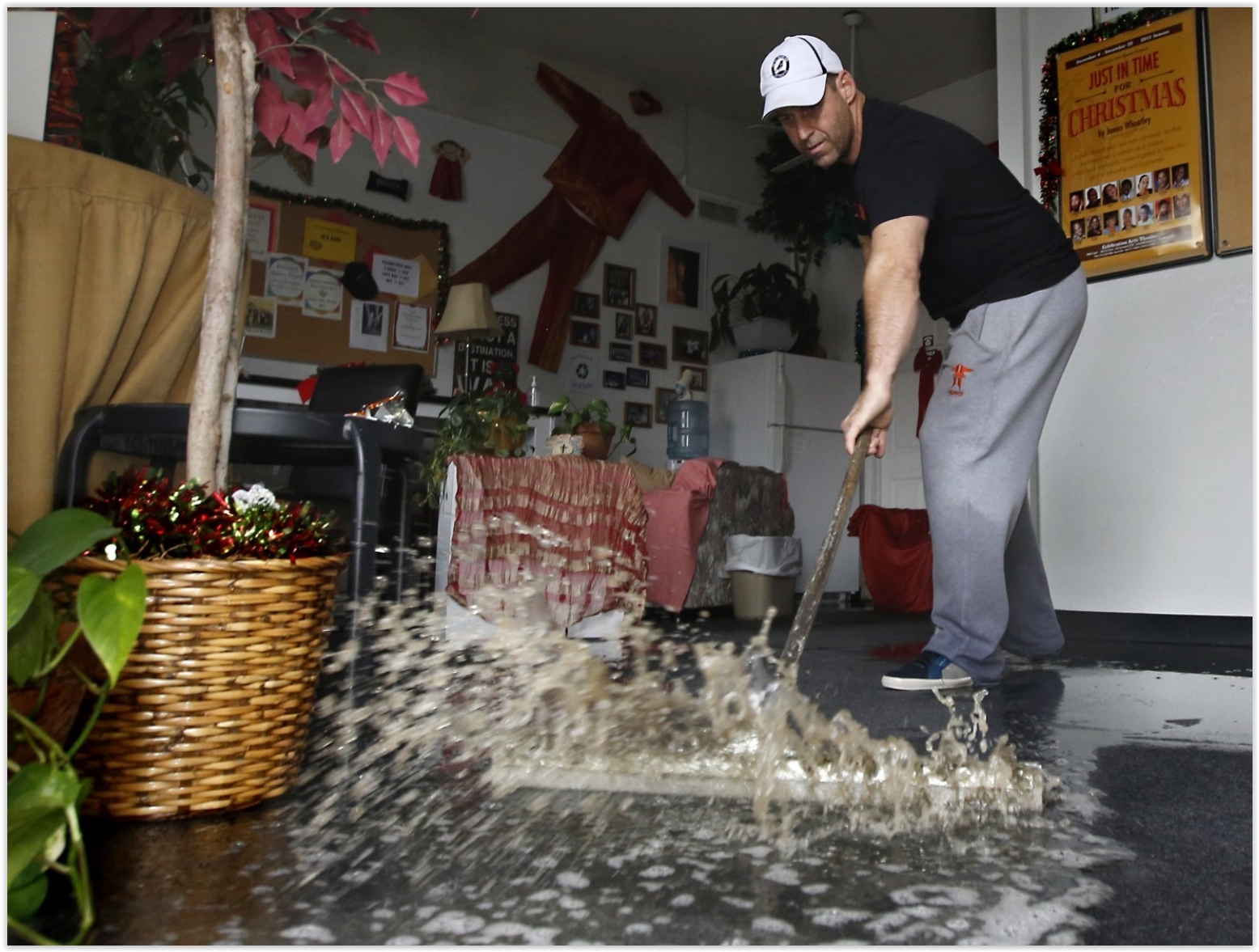
El Nino, La Nina: How Do They Mess With Our Weather? The Washington Post
has a good overview, but it's worth remembering that every El Nino warm
phase and La Nina cool phase is different. The weather never repeats,
but sometimes it rhymes. Here's an excerpt: "...
Warmer waters favor
low pressure and convection, or the development of thunderstorm
activity. This allows for some ENSO-based seasonal weather
predictability around the globe. The wet pattern is focused where the
ocean waters are relatively warmer. Therefore, La Niña often brings
floods to Southeast Asia and Oceania and drought to the Americas, as
eastern Pacific waters are cooler. El Niño frequently presents the
reverse effects. In North America, ENSO modifies the jet stream, which
carries and distributes weather patterns from west to east. Warmer
winters are generally expected during El Niño because the jet stream
takes on a more southerly track, fighting off Arctic air domination..."
Photo credit above: "
A business owner sweeps water out of one of the buildings in Sacramento, Calif." (Rich Pedroncelli/AP).
El Nino May Cause a Flood of Insurance Claims.
El Nino and the MJO (Madden-Julian Oscillation) may combine to spark
more flooding from Seattle to Los Angeles in the coming weeks. With that
in mind here's an excerpt from PropertyCasualty360: "...A search of the internet already shows policyholder counsel are advertising for El Niño-related claims. One such site states:
“Since
1978, 37 percent of all flood insurance claims in California came from
just two El Niño winters — one in 1982 and the other in 1997. If the
trend continues, thousands of homeowners will be submitting insurance
claims in 2016. With so many claims piling up, you can be sure that some
insurance companies will be unfairly denying claims, delaying payments,
offering “low-ball” settlements, refusing to abide by the terms of
their own policies, and inadequately processing or investigating
claims.”
First-party claims will certainly be on the
rise. Some will be covered by property coverage forms, and some will
not. Coverage issues will depend upon the forms and the specific claim
being made..."

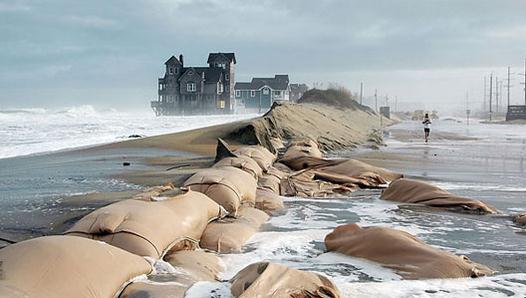
Flood Damage Costs Will Rise Faster Than Sea Levels, Study Says.
Will the costs of coastal flooding rise exponentially? Many communities
are already feeling the pain, according to new research highlighted at
InsideClimate News: "...
So far, the investigation of flood-related damages has lagged behind studies on sea level rise, said Jürgen Kropp, one of the study authors and a climate scientist at the Potsdam Institute for Climate Impact Research in Potsdam, Germany. This new study,
published Monday in the journal Natural Hazards and Earth System
Sciences, comes on the heels of two related climate papers. One found
that the current rate of sea level rise is the fastest on record for at least the last 28 centuries. The study, by researchers from seven institutions including Potsdam, was published last week in the journal Proceedings of the National Academy of Sciences. The other, by scientists at Climate Central, concluded
that the coastal flooding of American towns and cities will continue to
intensify in the future due to manmade global warming..." (File credit: Andrew Demp, Yale).

The Challenge of Taming Air Turbulence. Keep your seatbelt fastened at all times. Here's an excerpt of an article at
The New York Times: "...
Turbulence
is the leading cause of injuries to passengers and crew aboard
commercial aircraft, according to the Federal Aviation Administration.
In 2015, 21 people — 14 crew members and seven passengers — were injured
by turbulence, according to the F.A.A.; in 2014, 31 people were
injured, nine crew members and 22 passengers. The worst recent year was
2010, when 76 people — 25 crew members and 51 passengers — were injured
by turbulence. There are many different kinds of turbulence, with the
most problematic to predict and to avoid being clear air turbulence
(which is very difficult to detect using conventional radar). Much of it
is typically experienced at cruising altitude..."
File photo credit: Alamy.
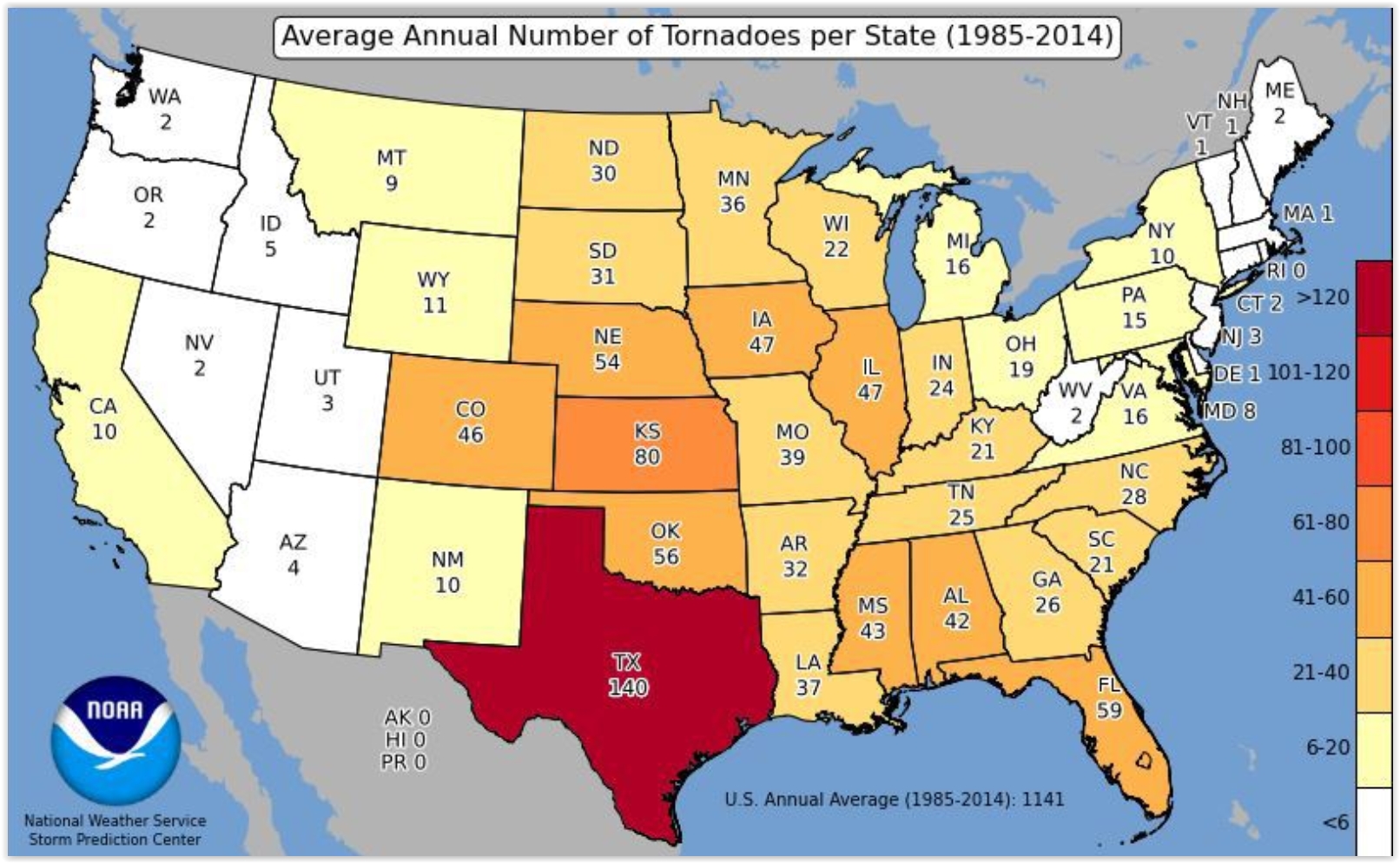 Ambitious Tornado Study Launches as Florida's Tally Hits 28 This Year
Ambitious Tornado Study Launches as Florida's Tally Hits 28 This Year.
Florida has already experienced 28 confirmed tornadoes in 2016, five
times the normal number, to date? Here's a clip from a story at
PalmBeachPost.com:
"...The so-called Dixie alley, which includes areas in Louisiana,
Mississippi, Alabama, Arkansas and Tennessee, has more deaths on average
per year than the more well-known tornado alley of the great plains
where massive cyclones are often caught on camera. Florida, which has
the third highest number of tornadoes on average per year nationally,
will also be included in the study as researchers examine how tropical
storms and hurricanes spawn tornadoes. The $5 million project,
dubbed Vortex SE, comes following a tragic tornado outbreak last week that killed seven people along the Gulf Coast and in Virginia..."
"Are We Now The New Tornado Alley?" asks a writer at
The Pensacola NewsJournal.
Move Over Snow Day. Is This The Era of "Tornado Days" for School Systems?
Dr. Marshall Shepherd takes a look at what may be a growing trend,
especially in southern states. Is it even a good idea? Here's an
excerpt of a story at
Forbes: "
During the last week of February, one of my University of Georgia doctoral students (also a meteorologist), Bradford Johnson, said,
They
closed schools in Baton Rouge, Louisiana (his hometown) in advance of
severe weather. I don’t remember that happening before.
An article from NOLA.com wrote,
Numerous
schools and school systems in southeast Louisiana have canceled or
curtailed classes Tuesday (Feb. 23) in advance of forecasted severe
weather.
Are we in the era of the “Tornado Day” for school systems?..."
FedEx Driver Narrowly Swept Away by Tornado. Kyra deserves a raise. Here's an excerpt from
Huffington Post: "
A
Louisiana FedEx driver is lucky to be alive after harrowing
surveillance video captured her narrowly being swept away by a powerful
tornado while trying to seek shelter. Video taken outside of Saigon's
True Value Hardware in Paincourtville Tuesday shows Kyra Johnson running
up to the store’s locked doors and frantically tugging on them to no
avail. Seconds after she disappears off screen, the building's roof and
walls are seen flying into the parking lot like cardboard. The screen
then goes black..."
Humans Can't Keep Trashing the Oceans Forever. Here's an excerpt of an Op-Ed at
The Japan Times: "
The
importance of the world’s oceans cannot be overstated. They supply 50
percent of the oxygen we breathe, feed billions of people and provide
livelihoods for millions more. They are the great biological pump of
global atmospheric and thermal regulation, and the driver of the water
and nutrient cycles. And they are among the most powerful tools for
mitigating the effects of climate change. In short, the oceans are a
critical ally, and we must do everything in our power to safeguard them.
This is all the more important, given the unprecedented and
unpredictable threats that we currently face. Though the ocean has been
integral to slowing climate change, absorbing over 30 percent of the
greenhouse-gas emissions and 90 percent of the excess heat generated
since the Industrial Revolution, the cost has been huge..."
File image: NASA ISS.
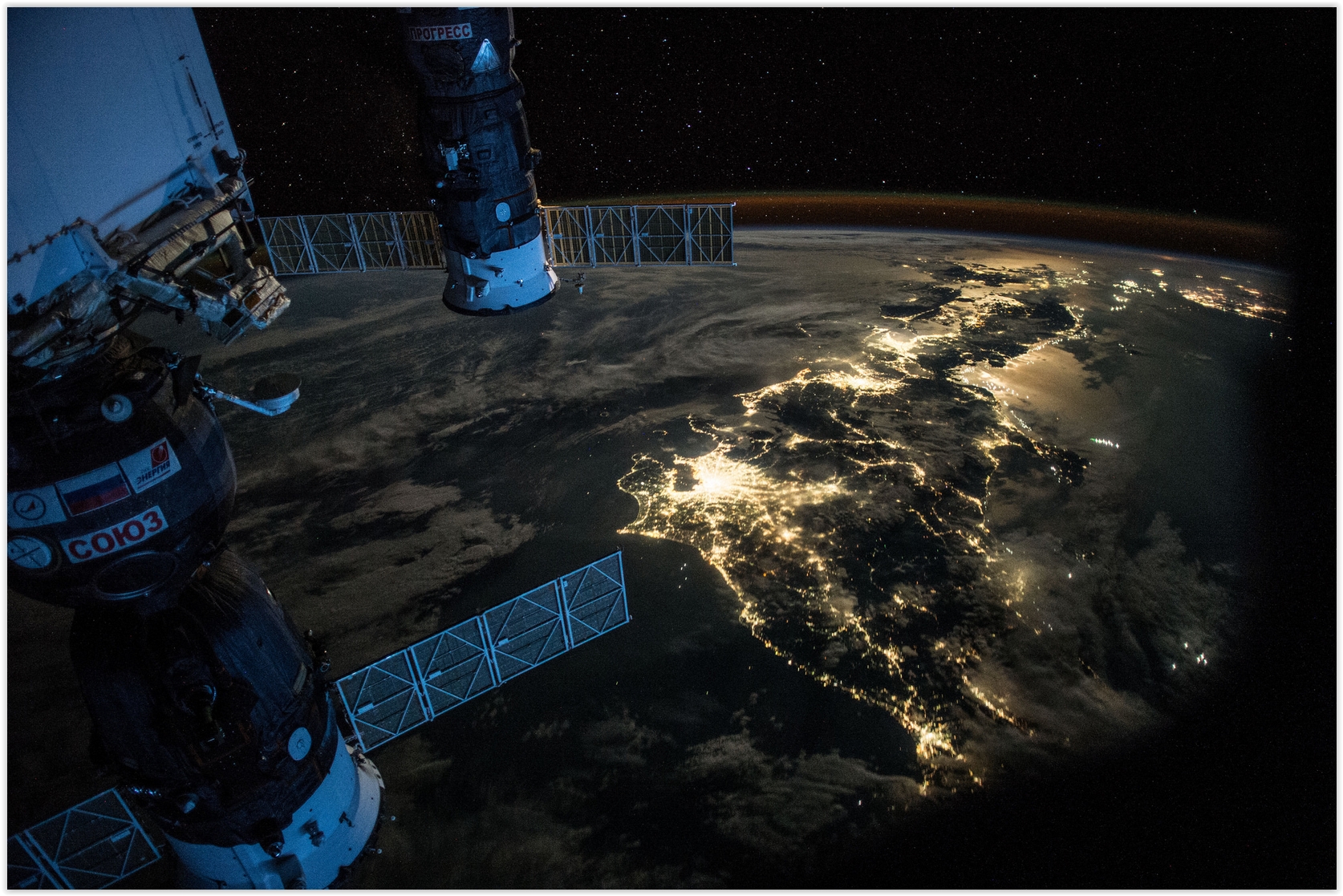 Best Pictures from #YearInSpace
Best Pictures from #YearInSpace. Check out some amazing photos taken by NASA astronaut Scott Kelly on the International Space Station, courtesty of
Flickr.
 Unprecedented Scientific Report Says Bees and Other Pollinators Are In Dire Need of Help
Unprecedented Scientific Report Says Bees and Other Pollinators Are In Dire Need of Help.
The Washington Post reports; here's a clip: "...
An
increasing number of pollinator species are thought to be in decline,
threatened by a variety of mostly human pressures, and their struggles
could pose significant risks for global food security and public health.
Until now, most assessments of pollinator health have been conducted on
a regional basis, focusing on certain countries or parts of the world.
But this week, a United Nations organization has released the first-ever
global assessment
of pollinators, highlighting their importance for worldwide food and
nutrition, describing the threats they currently face and outlining
strategies to protect them..."
Photo credit above: "A bumblebee alights on the bloom of a thistle in Berlin, Vt." (AP Photo/Toby Talbot).
Oil is So Cheap That Even Petrostates Don't Think Fuel Subsidies Make Much Sense Anymore.
The fossil fuel industry is subsidized (worldwide) at the rate of $10
million a minute, roughly $5.3 trillion every year, compared with just
over $100 billion for renewables. Here's a clip from Quartz: "...In
more than a few countries, though, consumers regularly enjoyed low
gasoline prices even before the oil market crashed, thanks to government
subsidies. Trouble is, these subsidies typically are paid for with
revenue brought in by the oil sector, either through taxes or
state-ownership outright. Now that fuel has gotten so cheap, the oil
revenue available to petro-states like Saudia Arabia and Venezuela is
scarcer, meaning the subsidies themselves are getting a lot less
affordable. Against swelling deficits
and shrinking foreign-exchange piles, a number of countries with
generous subsidies have now made them less so, and in some cases have
removed them altogether..."
Photo credit above: "
It's going to get a bit more painful at pumps around the globe."
(Reuters/Darren Whiteside)
Here Are The Energy Miracles Bill Gates Is Hopinig For. Here's a clip from Bloomberg Business: "...Unlike
the polio vaccine, which was developed in a lab, or early personal
computers, famously assembled in a garage, even simple energy
technologies may require things like rare-earth magnets, advanced
chemical coatings, nanoscale catalysts, and the engineering know-how to
put a million components together so that they work. Companies and
institutions working on these things, the nuts and bolts of the energy
revolution, will show up in force at the ARPA-E summit this week. Here
are three of the minor miracles included in the conference’s Energy Innovation Summit technology showcase ..."
Milan May Become The Biggest City Yet to Pay People to Bike to Work Instead of Taking Cars.
Quartz has the story; here's a snippet: "
More than 5.5 million around the world die prematurely every year due to air pollution—it’s the biggest environmental health risk.
In a bid to tackle air pollution, governments are desperate to get
people to stop using cars. Italy’s economic powerhouses, Milan and Rome,
have had to restrict car use for several days
as a result of dangerous smog build up, and Milan—with a population of
1.25 million people and among the most polluted cities in Europe—is the
latest city to propose paying commuters to bike to work..."
Photo credit above: "Come and get it." (Reuters/Fabrizio Bensch).
The Car Century Was a Mistake. It's Time To Move On.
Hey, I love my car but between parking, insurance, soul-sucking
traffic, safety and pollution impacts there may be a better way for
urban-dwellers. Here's an excerpt of a story at The Washington Post: "...Cars
were never necessary in cities, and in many respects they worked
against the fundamental purpose of cities: to bring many people together
in a space where social, cultural and economic synergies could develop.
Because cars require so much space for movement and parking, they work
against this objective — they cause cities to expand in order to provide
the land cars need. Removing cars from cities would help to improve the
quality of urban life..."
Image credit above: "Many
streets in the oldest part of Quebec City are car-free much of the
time. It is one of the most extensive car-free areas in North America." (CarfreeCities)

Report Cites Dangers of Autonomous Weapons. I just got done watching "Terminator Genisys" so maybe I'm more paraonid than usual, but a story at
The New York Times made me do a double-take. Give full control to AI? What can possibly go wrong. Here's a clip: "
A
new report written by a former Pentagon official who helped establish
United States policy on autonomous weapons argues that such weapons
could be uncontrollable in real-world environments where they are
subject to design failure as well as hacking, spoofing and manipulation
by adversaries. In recent years, low-cost sensors and new artificial
intelligence technologies have made it increasingly practical to design
weapons systems that make killing decisions without human intervention.
The specter of so-called killer robots has touched off an international
protest movement and a debate within the United Nations about limiting
the development and deployment of such systems..."
Architect Turns Bicycle Into Full, Rolling Weather Station. I suspect I need one of these - at least it doesn't look too dorky. Here's an excerpt from
GrindTV.com: "
While
in recent months we’ve seen inventors build everything from bamboo
bicycles to 100-foot bike frames, an architect in New York may have
created the most unique, if odd, cycling invention yet by turning a bike into a full weather station.
University at Buffalo architect Nicholas Rajkovich spent a summer
pedaling through northern Ohio with his strange-looking contraption.
While he said more than a few people were in disbelief at the weird
appearance of his bike, he’s adamant that the microclimate data, such as
solar radiation, sky view, surface temperature and air temperature,
that he’s collecting from riding the bike will be crucial to city
planning going forward..."
Photo credit above: "While it may look odd, this bike might change how Cleveland plans its urban parks." Photo: Courtesy of University at Buffalo.
TODAY: Clouds increase, late flurries possible. Winds: SE 8-13. High: 33
WEDNESDAY NIGHT: A period of light snow or flurries. Low: 23
THURSDAY: Slushy AM dusting, then slow clearing. Winds: NE 7-12. High: 34
FRIDAY: PM rain/snow mix; roads should be wet. Winds: S 10-20. Wake-up: 25. High: 38
SATURDAY: Partly sunny and pleasant. Winds: NW 5-10. Wake-up: 28. High: 42
SUNDAY: Fever returns. Mild sun, windy. Winds: S 10-20. Wake-up: 31. High: 52
MONDAY: Clouds increase PM showers. Winds: SE 10-20. Wake-up: 40. High: 54
TUESDAY: Hints of April. Stray T-shower? Winds: SW 10-15. Wake-up: 47. High: near 60.
Climate Stories....
Does a Carbon Tax Work? Ask British Columbia. Here's a clip from an analysis at
The New York Times: "...
In
2008, the British Columbia Liberal Party, which confoundingly leans
right, introduced a tax on the carbon emissions of businesses and
families, cars and trucks, factories and homes across the province. The
party stuck to the tax even as the left-leaning New Democratic Party
challenged it in provincial elections the next year under the slogan Axe
the Tax. The conservatives won soundly at the polls. Their experience
shows that cutting carbon emissions enough to make a difference in
preventing global warming remains a difficult challenge. But the most
important takeaway for American skeptics is that the policy basically
worked as advertised..."
Photo credit above: "A
Lafarge cement plant in Richmond, British Columbia. Cement makers,
whose business is energy-intensive, said imports from China and the
United States increased when the carbon tax was instituted." Credit via Cement Association of Canada.
Bernie Sanders Highlights Climate Change During Minnesota Stop. Here's a clip from
USA TODAY: "...
Our
moral responsibility is to make sure that we leave this planet in a way
that is healthy and inhabitable for future generations,” he said at the
rally. “Fossil fuel companies cannot wreck our planet for their short
term profits.” Sanders highlighted his leadership role in opposing the
Keystone XL pipeline, which his rival Hillary Clinton came out against
in September. As president, he said he would direct the State Department
to review whether approval of the projects would make climate change
worse, just as President Obama did when he rejected the pipeline..."
Photo credit above: "
Bernie Sanders speaks to supporters during a campaign appearance in Minneapolis on Feb. 29, 2016."
(Photo: Craig Lassig, EPA).
Large Group of Pro-Life Christians in Texas Campaigning for 100% Clean Energy by 2030. Here's an excerpt from Clean Technica: "...It
is time to stop poisoning the womb and our environment and create a
cleaner, brighter future for our children, free from pollution,”
explained the Reverend Mitch Hescox, President/CEO of the Evangelical
Environmental Network. “Over 638,000 kids in Texas have asthma, and
pollution makes it hard for them to breath [sic]. That’s not right.”
“The Holy Bible testifies to God’s mandate on all Believers to care for
Creation. Industrial pollution is clearly harmful to the environment and
threatens to harm human lives. That is why Christians in Texas are
asking policy makers to make creation care a priority,” stated Reverend
Dr Daniel Flores, The Hispanic Wesleyan Society, Fort Worth, Texas..."
Image Credit:
Leaflet via a Wiki CC BY-SA 3.0 License.
Can Miami Beach Survive Climate Change? Or will it morph into Venice, or the Lost City of Atlantis by the 22nd century? Here's a clip from a CNN story: "...Pull
up a map of projected sea level rise, and it's easy to see why. At even
2 to 4 feet of sea level rise, the island will be considerably flooded.
The National Oceanic and Atmospheric Administration says 6 feet of sea
level increase is possible by century's end. These are long-term trends
-- measured in decades and generations -- but they're certainly
frightening. Others in Miami Beach, however, are vowing to stay and
fight. The city is regarded by many as a proactive leader in efforts to
hold back the threats of rising tides. How are they doing it? And what
are the limits of engineering fixes to climate change and rising seas?..." (File image credit: Wikipedia).
Are Climate Change Adaptations Tied to Protecting Property or People? Study Follows the Money. Here's an excerpt from
The Orlando Sentinel: "
As
climate change continues, scientists have observed a disturbing trend:
The money that megacities spend to adapt to climate change seems to be
linked more to protecting valuable capital, and less to protecting
vulnerable people. The study, published in the journal Nature Climate
Change, reveals that cities in developing nations may be even less
equipped to protect residents against future health, environmental and
economic effects than those in developed countries. “Current adaptation
activities are insufficient in major population centers in developing
and emerging economies,” the study authors wrote..."
Photo credit above: "
Former
New York City Mayor Michael Bloomberg speaks while United Nations
Secretary General Ban Ki-moon listens during a Jan. 27 event about
climate change at the U.N. headquarters in New York." (Justin Lane / EPA).
 Extreme Cyclones Hitting the Philippines Are On The Rise - Study. Here's the intro to a story at Climate Home: "Typhoons
barrelling into the vulnerable Philippines have become more intense
over the last 45 years and wrought rising damages, according to a study.
While the total number of cyclones making landfall has decreased, the
strongest classification of storm has become more frequent, analysts
found. The average rate of storms with wind speeds of 150km/hr or more
rose from 5.5 to 6 a year between 1971 and 2013, researchers at the
Royal Meteorological Society wrote in the International Journal of Climatology.
Extreme Cyclones Hitting the Philippines Are On The Rise - Study. Here's the intro to a story at Climate Home: "Typhoons
barrelling into the vulnerable Philippines have become more intense
over the last 45 years and wrought rising damages, according to a study.
While the total number of cyclones making landfall has decreased, the
strongest classification of storm has become more frequent, analysts
found. The average rate of storms with wind speeds of 150km/hr or more
rose from 5.5 to 6 a year between 1971 and 2013, researchers at the
Royal Meteorological Society wrote in the International Journal of Climatology..."
Photo credit above: "
Houses destroyed by Typhoon Haiyan in 2013." (Flickr/ Asian Development Bank).
Leonardo DiCaprio's Oscars Speech Was About Climate Change, Which Could Be Worse Than We Thought. Here's an excerpt of a story from Chris Mooney at The Washington Post: "...Climate
change is real. It is happening right now,” DiCaprio continued. “It is
the most urgent threat facing our entire species, and we need to work
collectively together and stop procrastinating.” (You can watch the full
speech here.) A little-noticed scientific study that
emerged last week not only bears this out — but it also suggests that
climate change could be a more urgent problem than we all assumed..."
How Leonardo DiCaprio Became One of the World's Top Climate Champions.
The Guardian reports.
Inside Leonardo DiCaprio's Crusade to Save the World.
I give DiCaprio a lot of credit; he's putting his money, effort and
passion where his mouth is - trying to get the word out. Here's an
excerpt at
Rolling Stone: "...
Halfway
between mother and maker, Leonardo DiCaprio is not unhappily marooned
between the bright light of his own life – a looming Oscar, a personal
fossil collection, a chauffeured rental Tesla – and the bleakness of the
overheated world he inhabits with denialist Republicans and a
Bangladesh coastline that could be nearly a quarter underwater by 2050.
He wants us to move off fossil fuels entirely and wonders where we would
be if we had spent billions on finding renewable energy sources rather
than on the Iraq War..."
 Exxon Mobil's Insane Argument Against Action on Climate Change.
Exxon Mobil's Insane Argument Against Action on Climate Change. We can't do anything about it so why bother? Sounds rational to me. Here's an excerpt from
Grist: "
Exxon
Mobil has devised a bizarre new argument to wriggle away from
its shareholders’ demands: Humanity can’t fix the problem we created, so
we shouldn’t even try. Yep — as it turns out, Exxon Mobil’s
shareholders care a lot more about climate change than the company
itself does. The planet’s largest publicly traded oil and gas company challenged a resolution about
climate change regulations from its own shareholders on Friday, arguing
that it’s a practical improbability that the emissions-restricting
goals set forth by the recent climate accord in Paris
will actually be achieved. Therefore, Exxon Mobil says, it shouldn’t
have to address the impact that the regulations would have on its
business..."
Photo credit above: Flickr/Mike Mozart.
Dear Republicans: Climate Change Is, In Fact, Real (And Not a Religious Issue). Here's an excerpt of an Op-Ed at
The Winona Daily News: "...
Sea
levels are rising sharply, faster than at any previous point in the
last 28 centuries. In just one example, in Annapolis, Md., from 1955 to
1964, there were 32 days of tidal flooding. From 2005 to 2014, there
were 394 days of flooding. In the United States, this already is causing
immense problems. Americans in a number of coastal towns are dealing
with fouled drinking water, neighborhoods cut off from arterial roads
for days at a time, flooded, muddy, moldy basements, ruined yards and
houses that can’t be sold. Someday in the not-too-distant future, people
will be astonished and appalled that millions scoffed at the idea that
manmade carbon emissions had built up to such an extent that we badly
damaged the entire earth and possibly killed a lot of our fellow humans..."
The Many Signs of Climate Change in the Far North.
Newsminer.com has an interesting article from Fairbanks, Alaska - here's an excerpt: "...
Alaska’s
thousands of glaciers are the resting place of snows that fell
yesterday and many years ago. Those ribbons of ice worm along in
trenches between mountains all over Alaska. Almost all of them are
shrinking fast. After a few decades of continued study, glaciologists
say this: During the last 20 years or so, Alaska’s glaciers melted as
much as all of Antarctica’s glaciers (Antarctica is as large as eight
Alaskas). Alaska glaciers added one-third as much water to the ocean as
did Greenland’s ice sheet from 2005 to 2010. This is despite Alaska’s
ice having 1/20th the area of Greenland’s. UAF’s Chris Larsen and many
colleagues have made these calculations by measuring glaciers each year
with instruments mounted on aircraft and satellites. Alaska’s extreme
weight loss is showing up as sea spray in a storm topping a levee in New
Orleans..."
Photo credit: Ned Rozell. "
The accelerated loss of ice in several forms is a well-documented story of change in Alaska."





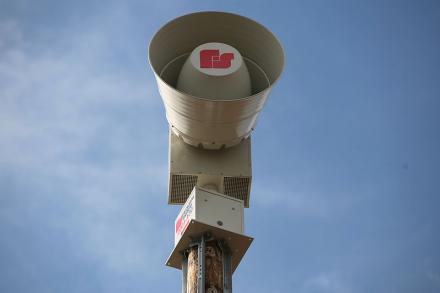

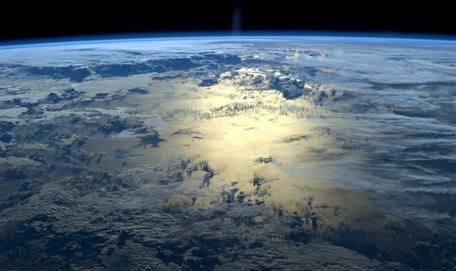
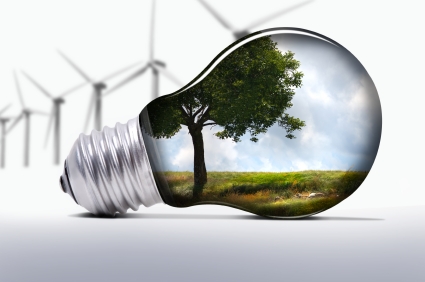
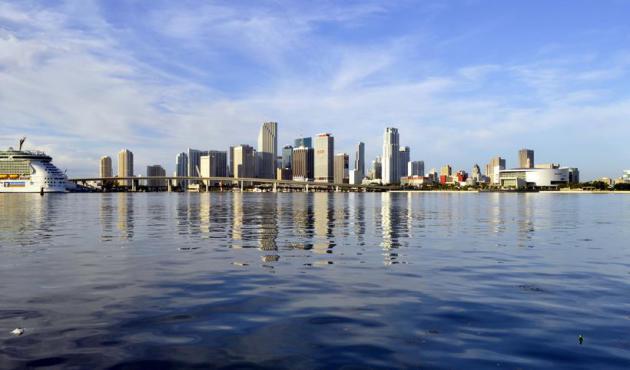


No comments:
Post a Comment